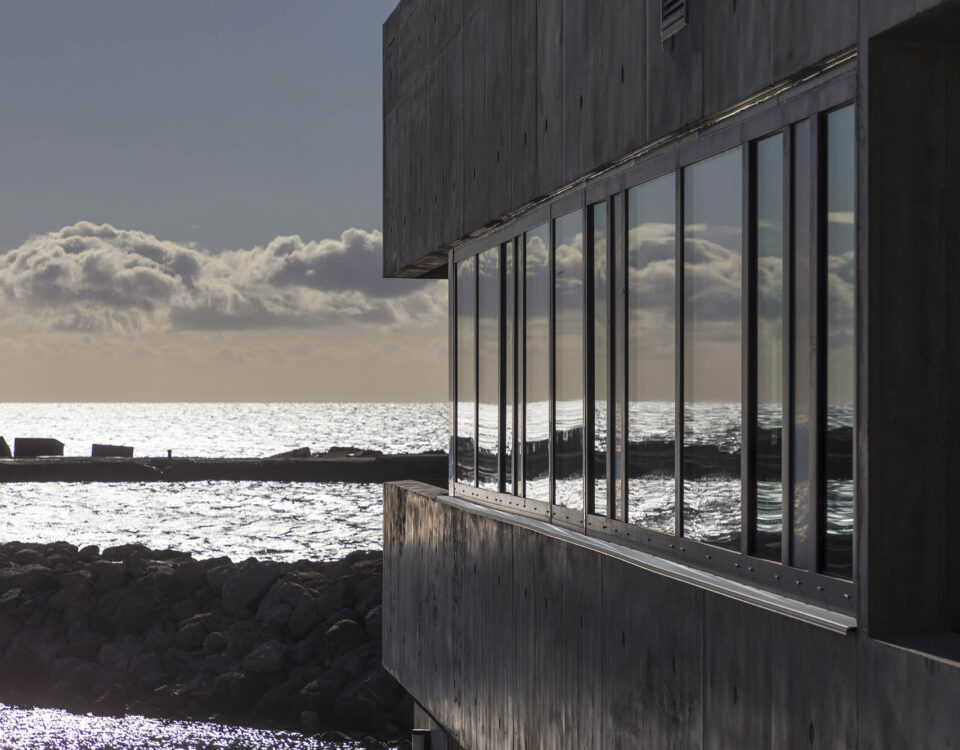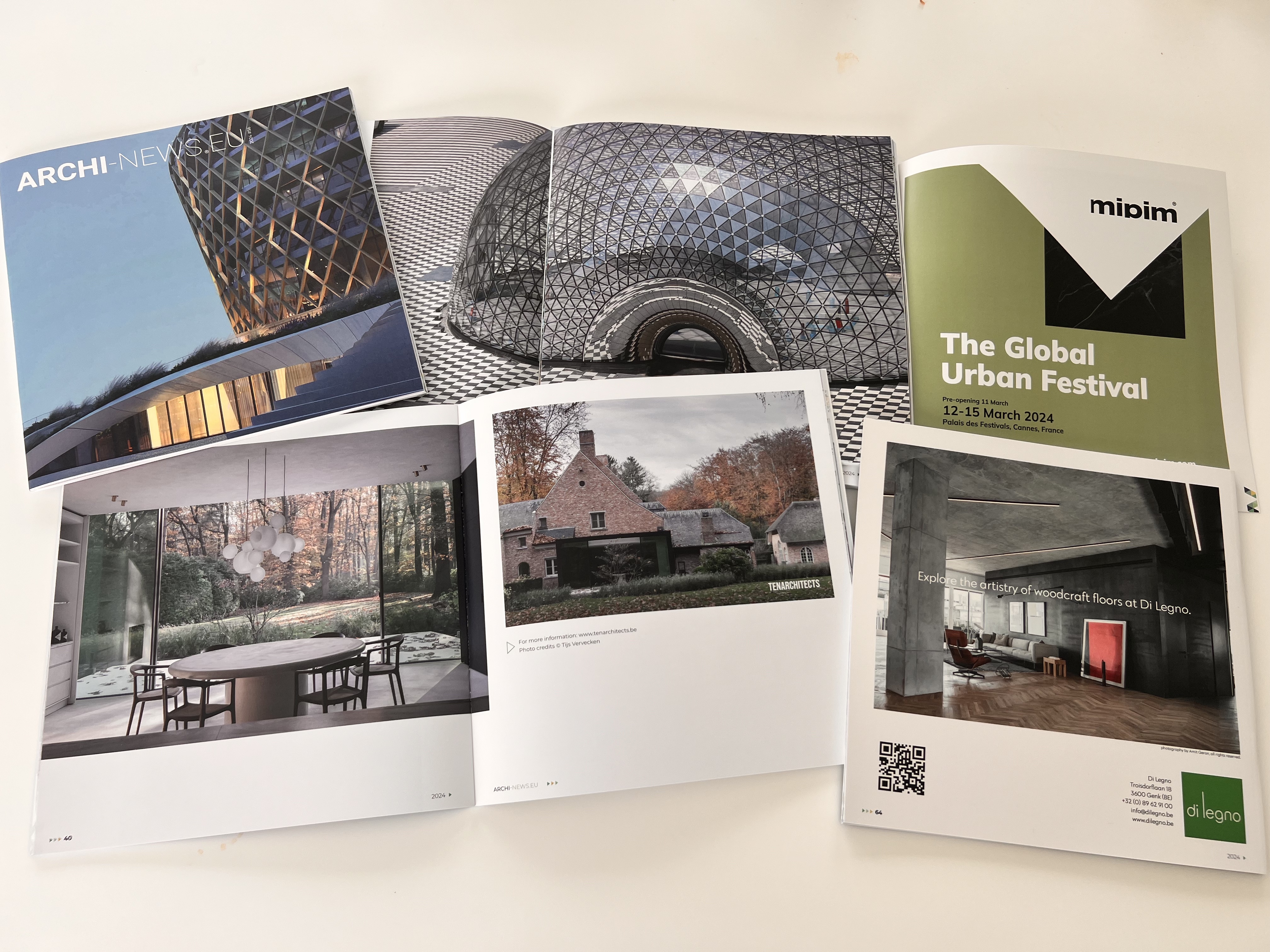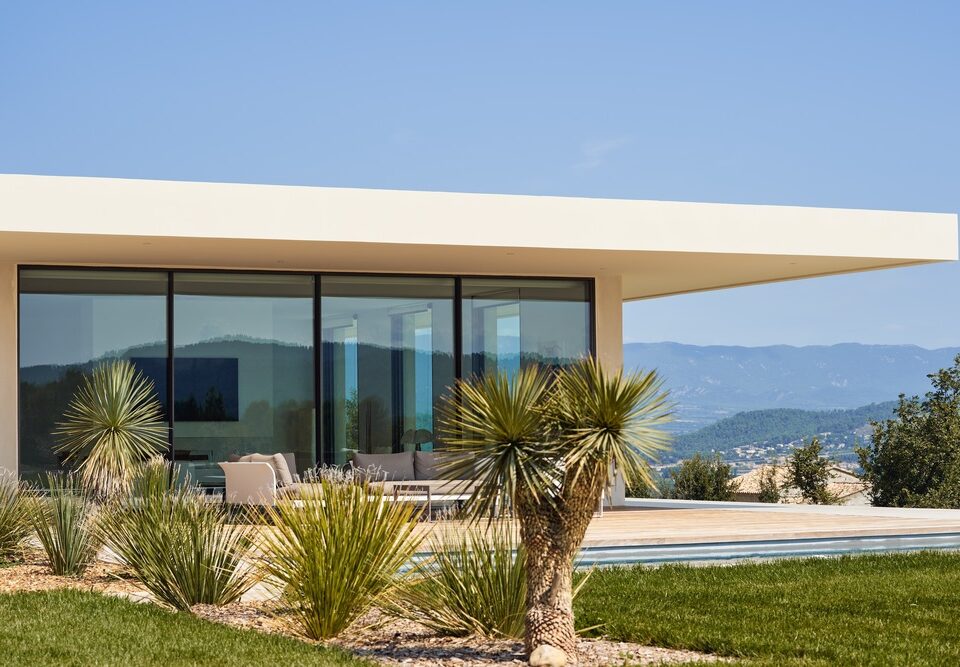A century-old campus reinvents itself

Casa Burés, Barcelona
April 2, 2020
Can fatjó double architectural skin.
April 29, 2020A century-old campus reinvents itself
ARCHITEM Wolff Shapiro Kuskowski architectes
An innovative residence for young students
Montréal, Canada, 2020-04-13 –
ARCHITEM Wolff Shapiro Kuskowski architects, a Montréal-based firm, is proud to unveil one of its most recent projects, an innovative residence for young students. Built for Bishop’s College School, this private boarding school provides a family-style environment for 270 students, age 12 to 17, coming from 37 different countries. Located near Sherbrooke, Québec, the century-old campus is set on a site of exceptional beauty, on the banks of the St. Francis River. The original buildings on this 250-acre campus are rooted in a long educational and architectural tradition.
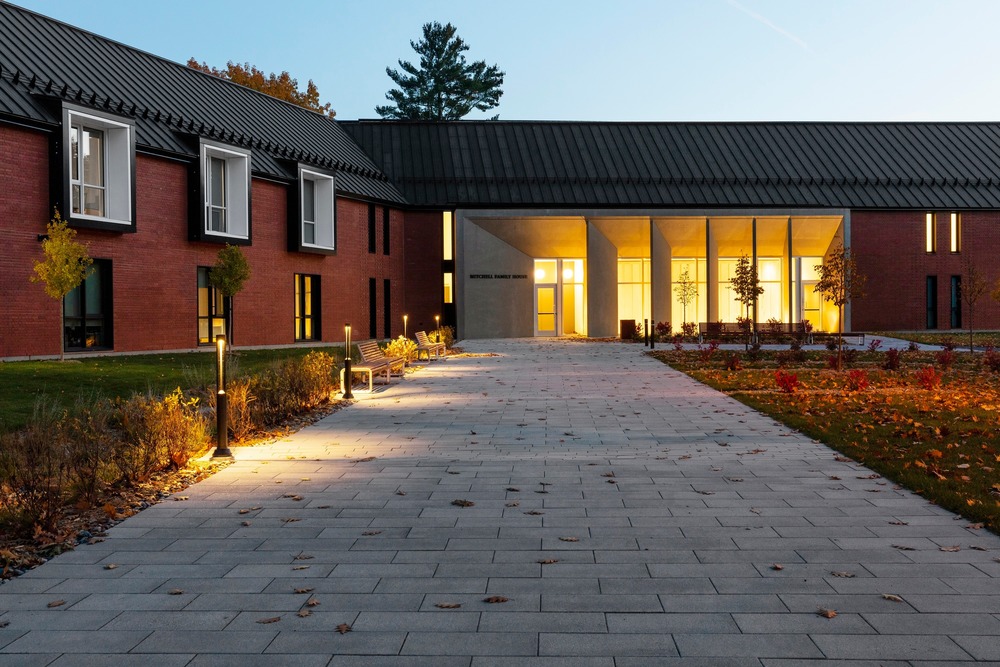
Photo credit: Maxime Brouillet
The construction of an eighth residence for students, the first to include both residential and academic components, was an unprecedented response to BCS’s interest in bringing together multiple aspects of the student experience. The new building, named Mitchell Family House, faces the existing campus while establishing a close connection to the surrounding forest and nearby river.
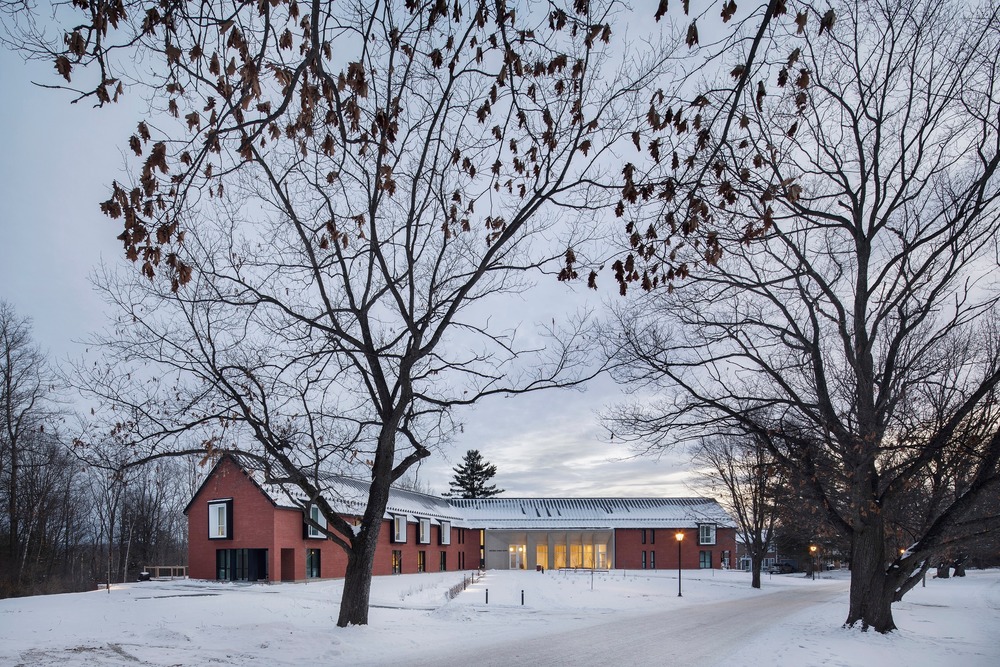
Photo credit: Adrien Williams
The V-shaped residence is organized in two wings hinging on a common central core. There are 18 rooms, each shared by two students, on the upper two floors. All rooms are connected to central living spaces, which include a lounge and dining/kitchen area as well as a quieter study corner on a mezzanine.
Each wing ends in a two-storey apartment occupied by “house parents” and their respective families. Their main role is to ensure the well-being of a group of teens away from their family environment. Each of the two apartments communicates directly with the corridors leading to the residents’ rooms. Families access these apartments from a separate entrance away from the students’ entrance.
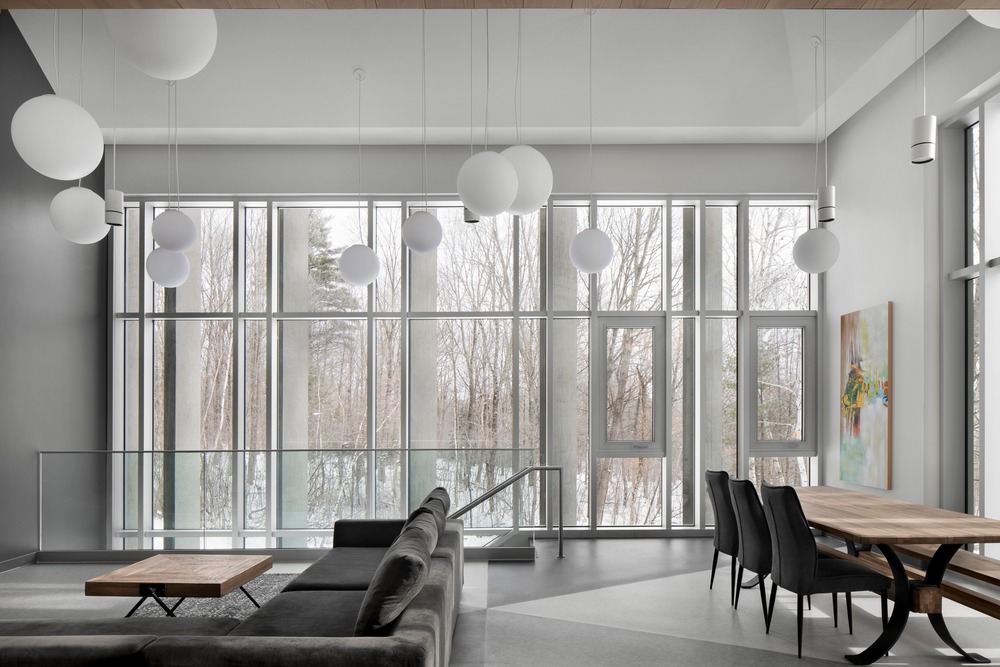
On the lowest level, dedicated to academic activities, one finds various multi-purpose spaces including a studio/office for a scholar-in-residence. The entire floor opens up to an outdoor agora connecting students and staff with the natural beauty that surrounds the building. Small-group events can also take place in this unique environment. Resembling a giant lantern, the common area’s central volume illuminates the exterior space at night.
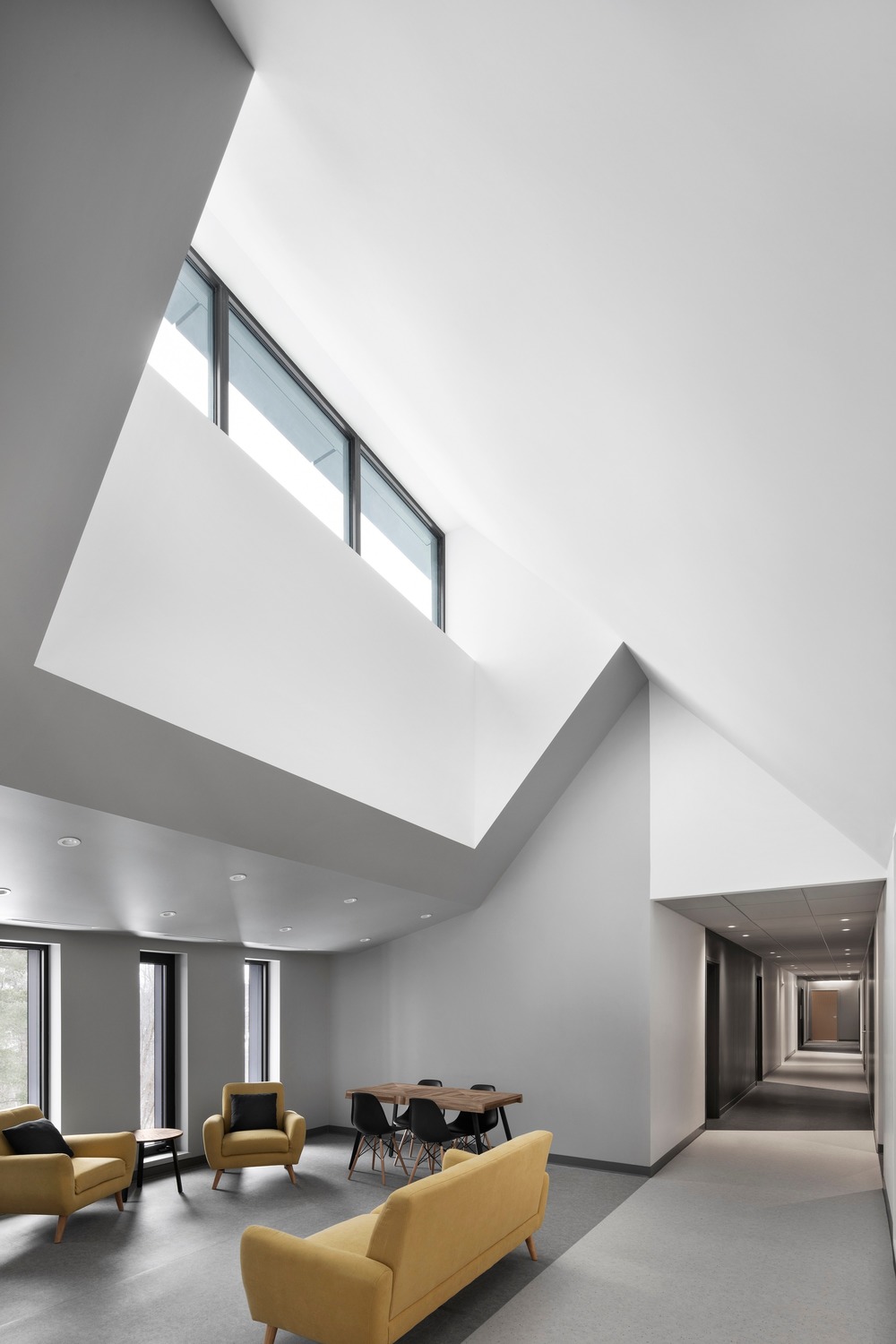
Photo credit: Adrien Williams
The mandate required that the building reflect its time yet be evocative of the existing campus’ architectural vocabulary, its scale, and its material palette. The architects opted for brick on all façades in a spirit of continuity, but also to celebrate the long brick-making tradition of the nearby town of Lennoxville. Wood was used on the interior to add warmth to both the public and private entrances, the stair volumes, and the social nodes.
The stone used on the campus heritage buildings was substituted by sculptural pre-cast concrete to give the new residence a contemporary signature. At the main entrance area, individually designed concrete fins signal the presence of the access points. Non-residents are directed towards the more public entrance, which fans out in the direction of the campus. The private entrance to the residential wings is treated in a more intimate way.
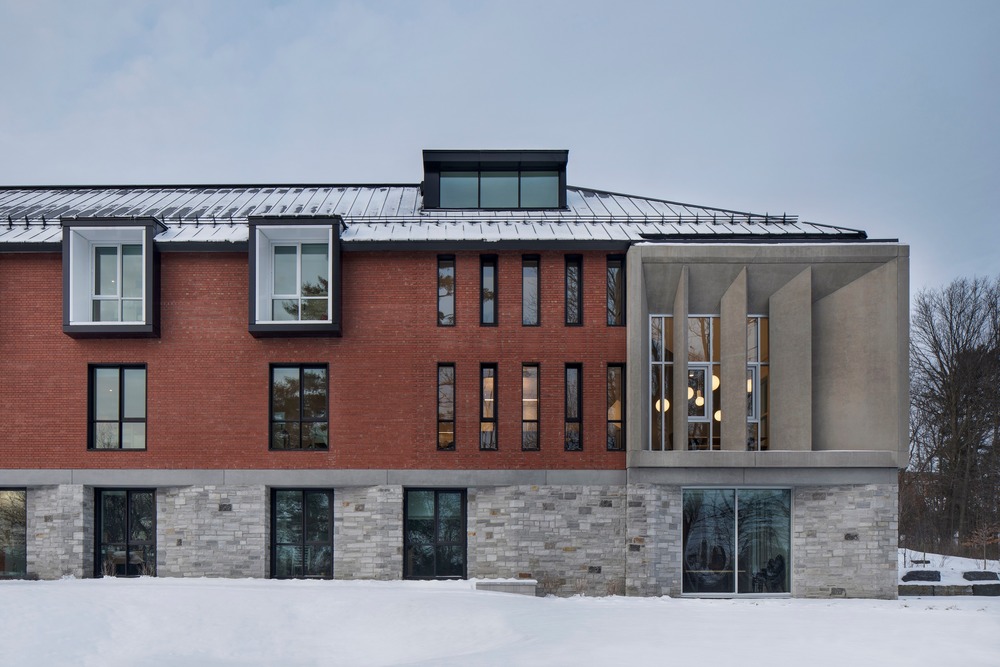
Photo credit: Adrien Williams
Sustainability Issues
The architects’ intention was to reduce the building’s carbon footprint to a minimum. Highly efficient mechanical systems and triple glazed windows were among the means used as well as prefabricated wall panels insulated from the outside.
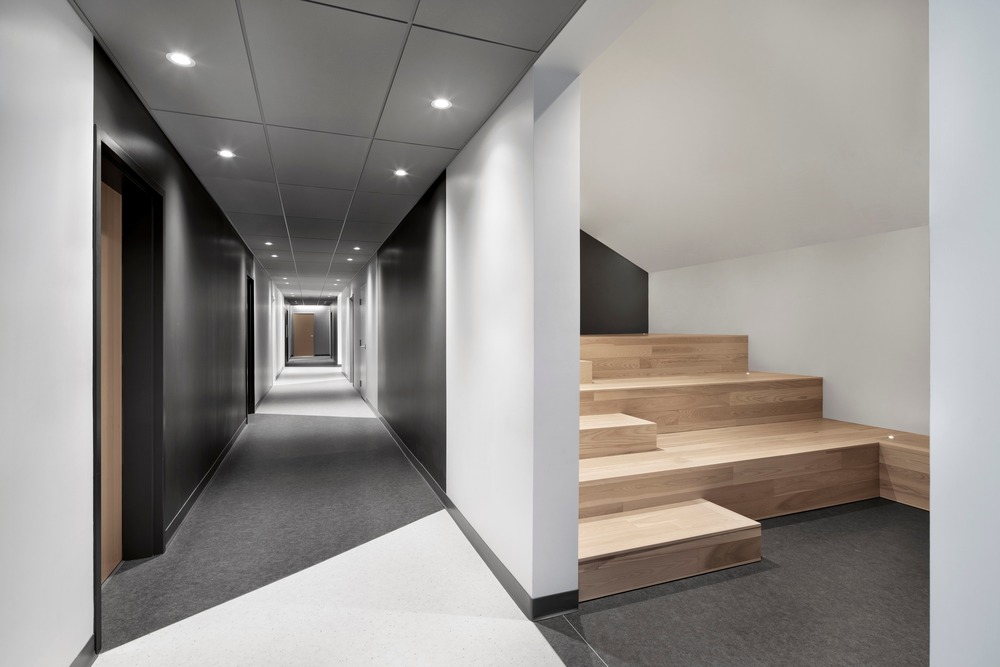
Landscaping
Particular attention was paid to water management on the site, especially given the building’s steep roof. As it reaches the ground, rainwater is channeled towards two retention basins to prevent water from reaching the natural woodland areas. Surface runoffs are also directed towards the basins in order to protect the riverbank from erosion.
The site’s “renaturalisation” process was initiated as soon as the building was completed. The landscape architects reintroduced native trees, ferns, and shrubs on the grounds in order to blend in the natural surroundings. Bollards were installed throughout providing low lighting in accordance with local sky protection bylaws. Vehicular traffic is kept to a minimum on the site for better enjoyment of the surrounding nature.
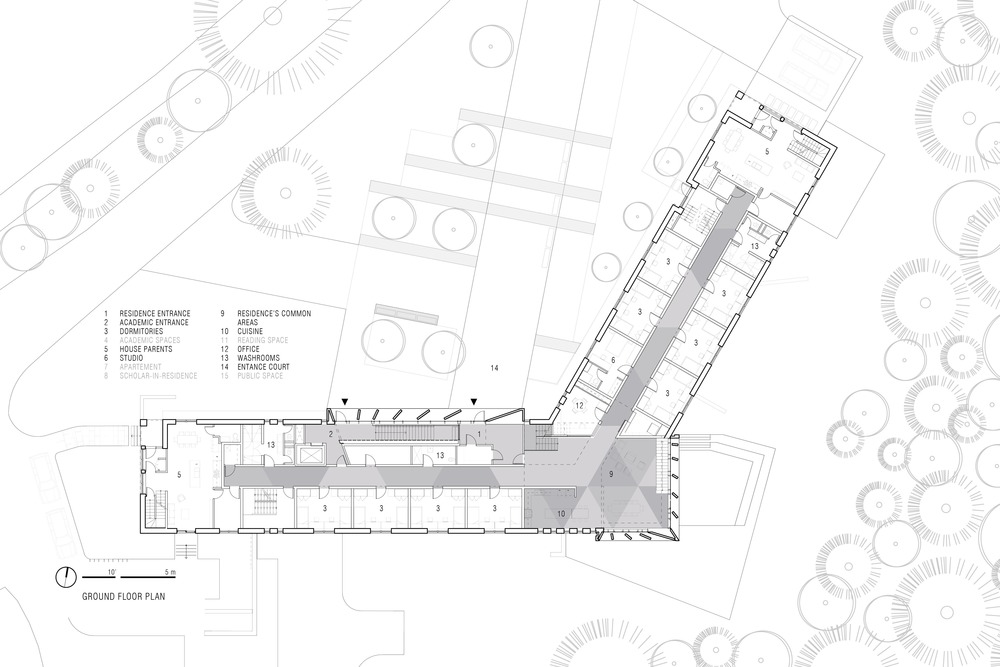
Project Data
Official name: Mitchell Family House
Location: Sherbrooke, Québec
Client: Bishop’s College School
Architects/designers: ARCHITEM Wolff Shapiro Kuskowski architects
Design Team:
Andrea Wolff, Partner, MOAQ
Elizabeth Shapiro, Partner, MOAQ
Magda Kuskowski, Partner, MOAQ
Mira Katnick, Partner, MOAQ
Johnny Salman, Associate, MOAQ
Katrina Novak, Associate, MOAQ
Kristian Morse, Intern
Harriet Strachan, Intern
Jose Orue-Bonneville, Technician
Alexey Kovyazin, Technician
Collaborators
General Contractor: Gératek Construction
Landscape Architects: Stuart Webster Design
Structural Engineers: Exp.
Mechanical and Electrical Engineers: FNX INNOV
Fire Protection: GicloCept inc.
Photographers: Maxime Brouillet; Adrien Williams
Area: 2415 m2 (26 000 ft2)
Cost: Undisclosed
Completion Date: Fall 2019
About ARCHITEM Wolff Shapiro Kuskowski architects
Founded in 1986, ARCHITEM Wolff Shapiro Kuskowski architects was one of Canada’ first architectural firms to be led by women. It evolved from a close collaboration between Architects Andrea Wolff, Elizabeth Shapiro, and Magda Kuskowski. The team was later joined by Mira Katnick who became the firm’s fourth partner in 2006. Today, the firm is known for its institutional, commercial, and residential projects as well as its interior design work.
ARCHITEM was particularly noted in recent years for its design of the Michal and Renata Hornstein Pavilion for Peace’s permanent exhibition, in the Montréal Museum of Fine Arts. The firm also distinguished itself with the Browns Shoes new corporate headquarters. ARCHITEM is known for its numerous residential projects in the Montreal area as well as in other southern Québec locations. Over the years, thanks to an exceptional network of collaborators, ARCHITEM has built for itself a solid reputation rooted in design quality and exquisite workmanship.


